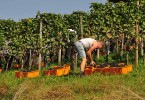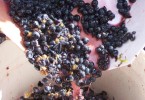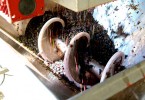What does “biological viticulture” means?
With the expression “biological viticulture” we are talking about the use of agricultural practices for the production of high quality grapes and wine.
The main principle is the use of process and procedures as natural as possible, for the production of nutrients, the cycle of the parasitic, the illness and the management of the infesting grass, reason why a biological vineyard is strictly tied to the territory where it is located.
In fact, a principle of biological viticulture is the use of a varieties and spices that are suitable for the type of soil where they grow, reason why it is better to choose local autochthone varieties, that usually has a higher resistance.
Biological viticulture: management of the soil

[wysija_form id=”7″]
The chemical-physical composition of the soil where the vineyard is located and it widely influence the wine produced here.
The biological viticulture is based on the soil as living species and the main goals of a good management of the soil fertility are:
– Management of the humus and an equilibrium water/air;
– The activity of microorganism of the soil;
– Enrichment of the soil with nutritive elements;
– Avoid an excessive thickening of the soil.
“Feed the soil and not the plant” is the most important biological principle as for the nutrition of the plants with the aim to reproduce the cycle of the natural nutrients.
Biological viticulture: allowed substances
The allowed substances in biological agriculture are:
– Animal fertilizer and sub-products as fish flour, blood and bones flour;
– Fermented domestic garbage use as compost;
– Minerals coming from natural sources;
– Biological preparation;
– Sub-products of plants;
– Seaweeds;
– Microelements.
Biological viticulture: the protection of the plants
In biological viticulture there are five fundamental principles of the protection of the plants:
– Fertility and health of the soil;
– Viticulture practices, suitable variety and infrastructure;
– Empowering of the natural defence and the application methods;
– Disinfestation and management of the habitats.
Imagine source:
www.sorgentedelvino.it
www.sensiinmovimento.it







